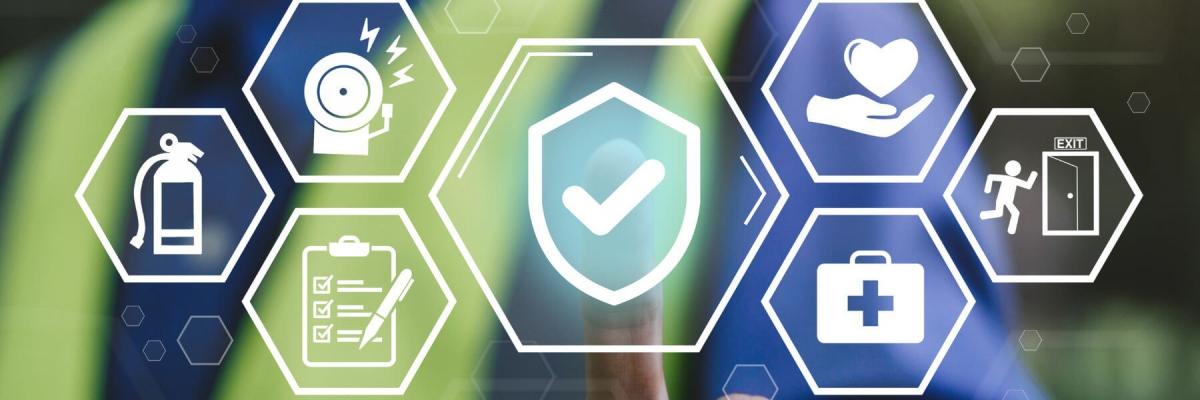
Workplace hygiene is a critical element of any safe, productive working environment. But what does that mean, what does it look like, and how can you make sure it happens? Here's everything you need to know about workplace hygiene.
Defining Workplace Hygiene
In its simplest form, workplace hygiene is about ensuring that a particular working area is hygienic. This involves more than just cleaning doorknobs or keeping teams away from potential toxins; it's also about air quality, food safety, infection control, and more.
Workplace hygiene is the broader, less-specific cousin of industrial hygiene, which OSHA describes as "the anticipation, recognition, evaluation, and control of those environmental factors or stresses arising in or from the workplace, which may cause sickness, impaired health and well-being, or significant discomfort among workers or among the citizens of the community." While both are important and often overlapping, workplace hygiene may apply to environments or topics where OSHA regulations aren't applicable or are less common.
The most important thing to remember about workplace hygiene is that it's a team effort. Requirements and directions aren't enough; you have to ensure your employees take an active part in ensuring hygiene throughout the work day.
Workplace Hygiene Basics
Because workplace hygiene can mean so many things, it's sometimes difficult to know where to start. Here are a few basics to get you on the right track:
Air Quality
Air quality concerns differ depending on the environment and task at hand, but as an employer, it's your responsibility to ensure employees can breathe safely. This sometimes involves introducing personal protective equipment (PPE) or checking an HVAC system's efficiency and cleanliness.
Water Quality and Access
An important part of workplace hygiene is access to potable water. OSHA has a lot to say about this topic, including these sanitation requirements:
- "Potable water shall be provided in all places of employment, for drinking, washing of the person, cooking, washing of foods, washing of cooking or eating utensils, washing of food preparation or processing premises, and personal service rooms."
- "Portable drinking water dispensers shall be designed, constructed, and serviced so that sanitary conditions are maintained, shall be capable of being closed, and shall be equipped with a tap."
- "A common drinking cup and other common utensils are prohibited."
- "Outlets for nonpotable water, such as water for industrial or firefighting purposes, shall be posted or otherwise marked in a manner that will indicate clearly that the water is unsafe and is not to be used [...]."
That means it's up to you to ensure employees have access to safe water and ways to drink or carry it.
Dry Conditions
Wet floors or other areas can cause slips, accidents, and all kinds of trouble. OSHA requires that floors be maintained in a dry condition and, where wet processes are used, proper drainage and waterproof equipment be provided.
Cleanliness
Cleanliness involves a lot of considerations, including:
- Properly cleaning restrooms.
- Providing waste disposal receptacles.
- Frequently emptying trash cans.
- Preventing leaks in any kind of trash container.
- Making hand soap readily available.
- Handling, storing, and preparing food safely.
General Safety
Workplace hygiene and workplace safety have a lot of overlap. For example, one of OSHA's requirements is for employers to facilitate cleaning, ensuring "every floor, working place, and passageway shall be kept free from protruding nails, splinters, loose boards, and unnecessary holes and openings." Simply put, safety makes hygiene easier and vice versa.
Tips for Better Workplace Hygiene
Looking to improve workplace hygiene? Start here:
Leverage Training Courses
Workplace safety and hygiene courses are a great way to ensure your employees have all the information they need. They'll learn about their own responsibilities, how they can create a safer work environment for everyone, what to expect from you as their employer, and more.
Conduct Proper Tests
Air and water quality tests help determine whether you have a workplace hygiene problem. You should perform these tests on a somewhat regular basis, especially after any significant change--including a new workplace activity or task, a natural disaster, local water system issues, and more.
Manage Pests
Pest control is part of many workplace hygiene requirements, from food safety to overall cleanliness. Preventive measures are a great first step, but if you already have pests, you may need to call in the experts.
Share Benefits
Employees should know why workplace hygiene matters so much--not just to the company, but for their own health. Share the benefits through conferences, workplace posters, guidelines, and even everyday conversations.
In conclusion, workplace hygiene is a huge part of creating safer, more productive environments for everyone. As an employer, you have a responsibility to fulfill these requirements and more.
Contact us today to learn about workplace hygiene and safety courses!
